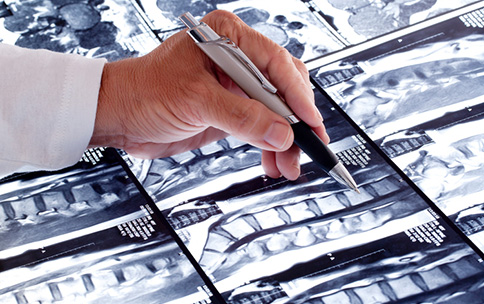
Researchers from the NIH Undiagnosed Diseases Network (UDN) clinical site published a study of a novel mutation found in a 46-year-old woman suffering from progressive muscle weakness and muscle spasms. This mutation in the BAI2 gene was spontaneous and is not present in either of the woman’s parents. The BAI2 gene encodes a type of signaling protein called a G protein-coupled receptor, and is found primarily in nerve cells. A mutation that caused a change in BAI2’s function in nerves might result in symptoms of muscle weakness and spasms.
To understand whether the mutation in BAI2 could cause the patient’s symptoms, the researchers collaborated with UDN Gene Function researchers from Emory University funded by the National Institute of Neurological Disorders and Stroke (NINDS) to study the mutant BAI2 gene in cells grown in the laboratory. By carefully studying the molecular properties of BAI2, the researchers made two key observations. First, the mutant gene results in a functional protein that is present on the surface of cells in larger amounts than the normal protein. This is important because G protein-coupled receptors typically work by receiving signals at the surface of cells. Second, the mutant version of BAI2 has an enhanced ability to transmit signals to the cell, possibly due to its increased presence at the cell surface. These findings suggest this mutation in BAI2 results in an overactive signaling protein in the nerve cells of the patient.
While these results are promising, and suggest a possible genetic cause for this patient’s neurological condition, it is difficult to prove such a diagnosis. Ideally, additional patients will be found with similar mutations and symptoms to show definitively that the BAI2 gene mutation causes the observed symptoms. Further exploration of mutations in BAI2 in neurological conditions is particularly promising because many G protein-coupled receptors are “druggable” proteins, so drugs to inhibit BAI2 function could be developed in the future to treat these conditions.
Reference
-
A disease-associated mutation in the adhesion GPCR BAI2 (ADGRB2) increases receptor signaling activity. Purcell RH, Toro C, Gahl WA, Hall RA. Hum Mutat. 2017 Sep 10.


